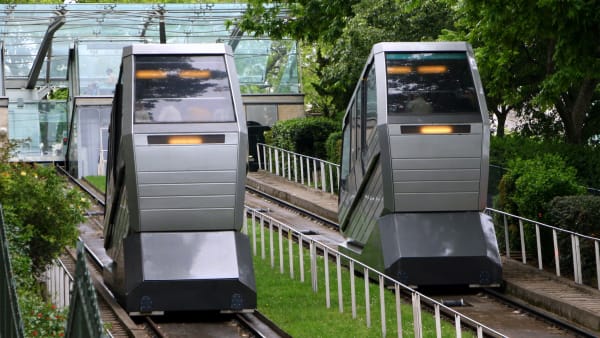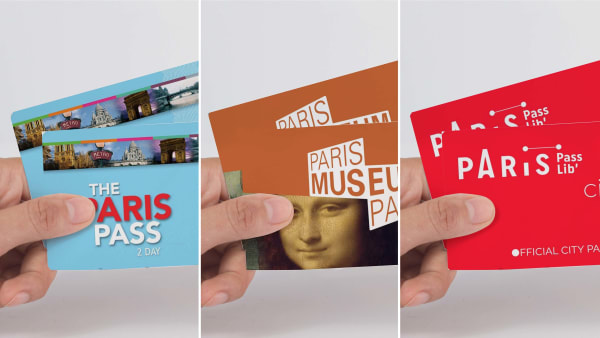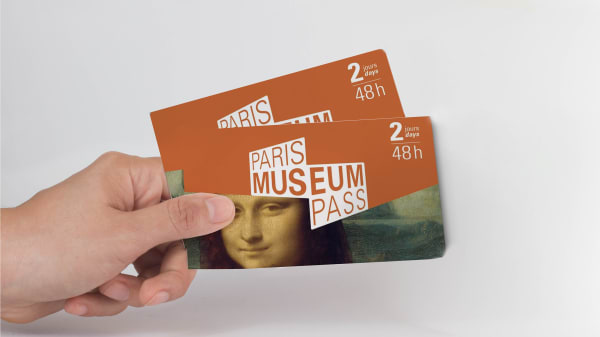Public Transport in Paris - All you need to know
All your questions regarding Paris’ public transport answered. The most efficient ways to move around the city, the cheapest, and our tips.
Public Transport in Paris - All you need to know
All your questions regarding Paris’ public transport answered. The most efficient ways to move around the city, the cheapest, and our tips.
What is Paris’ transport like?
Paris enjoys a thoroughly well-connected public transport network. The system is made up of Métro, urban buses, RER trains, the Montmartre funicular, and the tramway. These means of transport create a network that connects all areas of the city to each other and to the suburbs.
Aside from its coverage of the city, another great thing about Parisian public transport is that the ticket system is fully integrated. This means that the tickets and passes available can be used across different means of transport. You do have to, however, be mindful of the transport zone validity.

What are transport zones 1 to 5 like in Paris?
Paris is a rather large city, especially if one considers the suburban areas and the airports. The city is divided into five transport zones, but the one you’ll spend most of your time in is Zone 1, which roughly corresponds to the Parisian centre. Almost all the major sights and monuments are found in this area, which is where the Métro operates.
Other means of transport (urban buses, RER trains, and the tramway) cross over into other zones. If you have to leave the city centre, you’ll most likely rely on the RER network. Usually, this is when you need to reach the airports or some important attractions outside the city centre.
- Zone 5: Charles De Gaulle Airport (RER line B), Disneyland Paris (RER line A).
- Zone 4: Orly Airport, Versailles Palace (both RER line C).
What are the best tickets for transport in Paris?
The most commonly used transport tickets in Paris are three. They are the T+ tickets (single journey tickets), the Paris Visite (a travel card with 1, 2, 3, or 5-day duration), and the Passe Navigo (a personalised weekly or monthly pass).
All means of public transport - Métro, urban buses, RER trains, Montmartre funicular, and tramway - can be accessed with these tickets. However, you might not be able to use transport in all zones, depending on the ticket.
T+ tickets, for example, are only valid in Zone 1, while the Passe Navigo is valid across all zones. As for the Paris Visite, that depends on the zone validity you choose (you can pick either zones 1 to 3 or zones 1 to 5).
If you’d like to know more about these three passes and how they compare to one another, you can have a look at our dedicated article.
What is the best way to get around in Paris?
The main means of public transport you’ll use in the city centre is the Métro, followed by the buses and the RER trains.
You’ll only use the Montmartre funicular to go up to the Montmartre hill, and the tramway is only really useful to locals who need to move between the suburbs and the city.
Is it easy to get around in Paris with public transport?
As long as you’re familiar with the various means of transport available you should find it easy enough to navigate Paris’ public transport. A good idea is to have a map of the network downloaded on your phone so that you can easily check your destination or line.
A great resource to help you get around Paris’ transport is the Bonjour RATP app. This app is basically an all-in-one application that helps you find your route, consult timetables and maps, as well as get live updates on traffic, disruptions, and strikes across the entire network (Métro, RER trains, buses, tramways, Transilien SNCF, and Orlyval).
On Bonjour RATP you can also top up some of your tickets and passes (T+ tickets, Passe Navigo, OrlyBus tickets, and RoissyBus tickets).
Download Bonjour RATP for Android
If you’d like to know more about Bonjour RAPT and other useful transport apps in Paris, you should check out our dedicated article.
How to buy metro tickets in Paris?
Depending on the type of ticket you choose, here is where you can buy Métro tickets (also valid for other forms of transport).
| T+ tickets (individual) |
|---|
| Automatic vending machines in Métro, RER, and tram stations.Selected TGV train lines.Bonjour RATP app |
| T+ tickets (individual) | T+ 10 packets | Paris Visite | Passe Navigo |
|---|---|---|---|
| Automatic vending machines in Métro, RER, and tram stations.Selected TGV train lines.Bonjour RATP app | Automatic vending machines in Métro, RER, and tram stations.Selected TGV train lines.RATP-authorised retailers. | Automatic vending machines in all RATP stations (this includes Métro and RER stations).Ticket desks in RATP stations (this includes some Métro and RER stations). | RATP ticket desks.RATP automatic vending machines.Authorised RATP retailers.Selected ATMs in Paris.Bonjour RATP app |
Keep in mind that T+ 10 packets need to be loaded on a reusable Navigo Easy Pass, which is printed the first time you get a T+ 10 carnet and costs €2.00 (one-time purchase).
The Passe Navigo, instead, needs to be loaded on a Navigo Découverte travel card. This card costs €5.00 (one-time purchase) and can be bought at the RATP ticket offices and approved local shops.
All other tickets are printed upon purchase and ready for use. Normally, you can pay for all tickets and passes in cash or by card. If, however, you are using an automated machine, be careful, they might take one or the other exclusively.
What is the cheapest way to travel in and around Paris?
Depending on how and how much you are using public transport, different solutions might be more convenient. Here is a comparison table of the most popular tickets.
| T+ ticket single |
|---|
| €1.90 |
| T+ ticket single | T+ 10 pack | Passe Navigo weekly | Paris Visite |
|---|---|---|---|
| €1.90 | €14.90 | €22.80 | 1 day: €12.00 (centre), €25.25 (all zones)2 days: €19.50 (centre), €38.35 (all zones)3 days: €26.65 (centre), €53.75 (all zones)5 days: €38.35 (centre), €65.80 (all zones) |
Normally, the Passe Navigo is the cheapest option (€22.80) in relation to its usage time (an entire week). However, the Navigo is strictly valid Monday to Sunday, regardless of when you purchase the pass.
Additionally, you can only buy the Passe Navigo for the current week from Monday to Thursday. This means that if you visit Paris in between weeks or for a long weekend, you won’t be able to buy a Passe Navigo.
In that case, unless you plan on using public transport extensively (more than 7 journeys a day), your cheapest option would be getting a T+ 10 pack.
If you need to rely on public transport heavily, you should get a Paris Visite. Unless your accommodation is outside the city centre, we recommend you get the Zone 1-3 Paris Visite.
How crowded is the Paris Métro?
The Métro in Paris can get pretty busy, especially at peak hours (morning rush, lunchtime and afternoon). This is nothing to worry about, as the service is more frequent at these times. The only thing you need to be careful about is pickpocketing, which is more common and easier to miss when trains and stations are packed.
If you’d like to know more about the Paris Métro, you can check out our article on it.
What is the difference between RER and Métro in Paris?
You might be confused as to what makes the RER trains and Métro different. The main difference is in how the networks function. While RER trains operate on a larger scale, covering transport Zones 1 through 5, the Métro only covers the city centre (transport Zone 1).
This means that RER trains make fewer stops in the centre and move from one end of the city to the other in a much shorter time. On the other hand, you’ll find Métro stations almost everywhere in the centre, but getting from one area to the other can be slower, due to the increased number of stops.
If you want to learn more about the RER network, you can read our dedicated article.
Is Paris Métro safe?
In general, absolutely yes. The stations are well-kept and normally surveilled. That said, pickpocketing is extremely common in Paris, and the Métro is a popular place for it to happen. Fortunately, if you are careful and take a few precautions, you will be okay.
First of all, make sure you always have an eye on your belongings. Never leave your things unattended and don’t make them easy to steal. That includes things like keeping your wallet in your back pocket, leaving your bag or backpack open, or keeping your phone on your lap as you fall asleep.
Late at night, it might be best to avoid big stations with lots of corridors, like Gare du Nord, Stalingrad, Barbès-Rochechouart, and Jaures.
If you want to know more safety tips, not just for the Métro, but also for Paris in general, you can check out our article.














